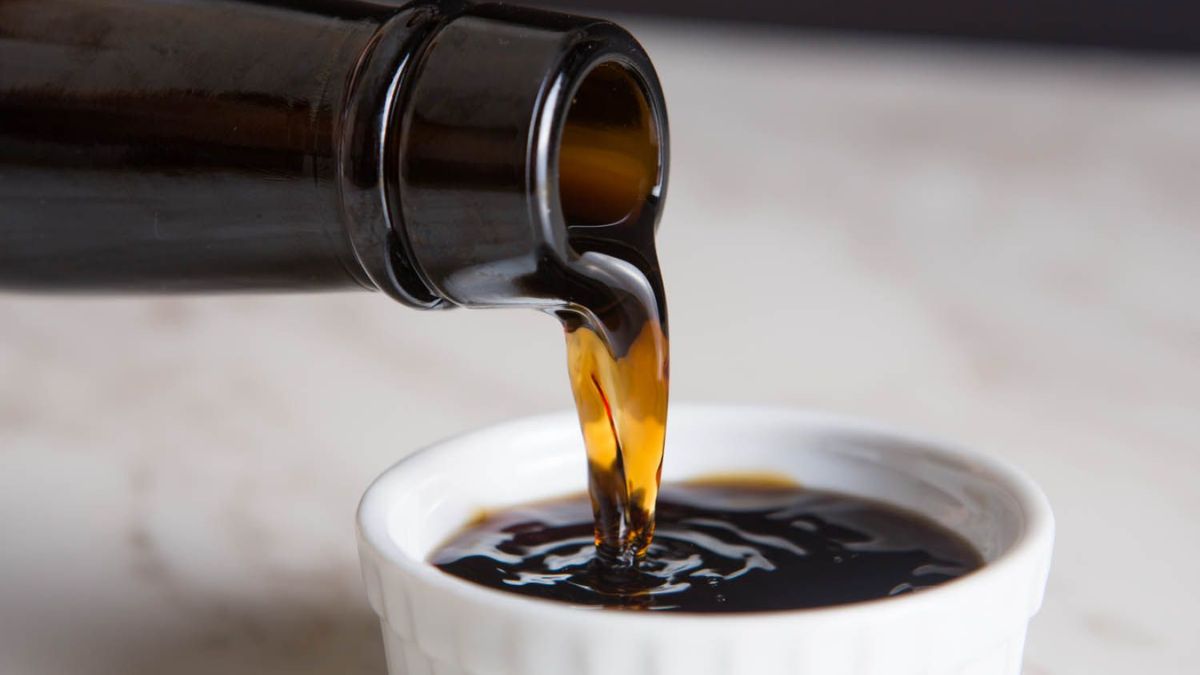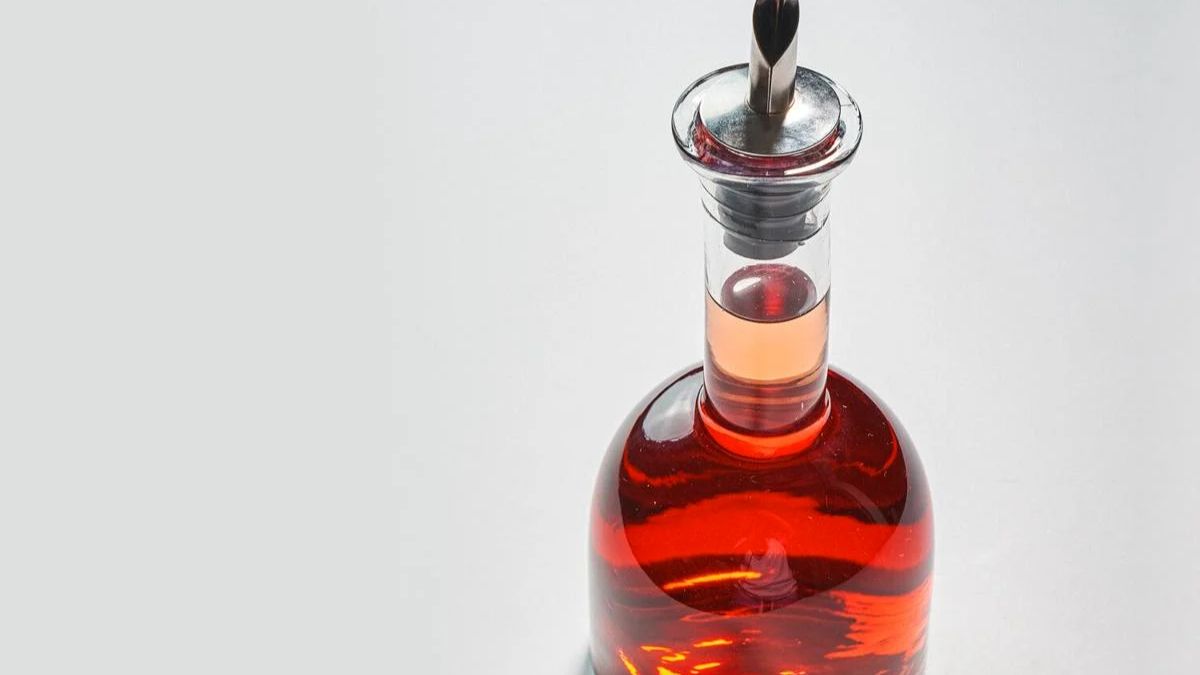Sherry vinegar is made from Sherry, a white wine made with brandy from grapes grown near the Spanish town of Jerez. Because of this, you’ll often see the words “Vinagre de Jerez” on bottles. For this label to be on the vinegar, it must have been aged for at least six months. To make sherry vinegar, the Sherry is first turned into acetic acid. Acetify is a fancy word for letting the Sherry get exposed to air so that it starts to turn into vinegar. The old and new vinegar are then mixed to make sherry vinegar. This combines the milder flavors of the younger vinegar with the stronger and more complex flavors of the older vinegar.
Sherry vinegar is a type of wine vinegar with a milder flavor than red wine vinegar but is not as sweet as balsamic vinegar. Real sherry vinegar comes from Spain and is made from sherry wine that has been aged in barrels for at least six months. Sherry vinegar that has been aged for at least two years is called “reserve.” There is even a type called “gran reserve” that has been aged for more than ten years. Sherry vinegar is harder to find and more expensive than balsamic because there aren’t as many cheap versions made in the United States. If you need to find a substitute for sherry vinegar in a recipe, you may be able to use one of several other types of vinegar without changing the dish in any way.
What is Sherry Vinegar?
Sherry vinegar is made in the province of Cadiz in southwest Spain. Like balsamic, it has a protected name. But unlike the whole range of balsamic, the quality of things sold in stores as “sherry vinegar” varies less, and there are fewer low-quality copies. Sherry wine is the base, and the type of grapes used to make the wine determines how dry the vinegar will be.
The wine ferments on its own, then ages in barrels for at least six months. Sherry vinegar with the label Reserva has been aged for at least two years, and one with the label Gran Reserva has been aged for more than ten years. The darker and more complex the color and taste of vinegar, the longer it has been stored (and the more expensive).
Even sherry vinegar that is still young has a lot more going on than the average wine vinegar. I love cooking with it because it has a crisp, piercing acidity balanced by a lot of nuttiness and caramel notes. It makes food taste both brighter and richer at the same time. I add a splash of sherry vinegar to beans, marinara, and hearty soups in the winter. In the summer, it’s my go-to acid for drizzling over fresh summer produce like snap peas, sliced tomatoes, and leafy salads.
At least one brand of sherry vinegar will be in a well-stocked grocery store. Columela and Gran Capirete are two of the most popular, both great all-around vinegar. If you can find it, the Zoe brand is especially well-balanced and has a great price. But the main thing I’ll tell you is to use it. Find whatever you can. Adding acid to dishes in different ways is what makes them more interesting.
What is the Dry Sherry?
Here are some of the best Dry Sherry
Fino
Finos are the style of Sherry that is the driest and saltiest. They are usually made from high-acid Palomino grapes grown in white chalky soils called albariza. White wines fermented in tanks spend their whole fortified lives under a layer of yeast called flor, which keeps the wine from going bad. Finos usually have 15–16% alcohol, should be served cold, and go great with salty snacks like peanuts, potato chips, cured olives, and fried seafood.
For those unfamiliar with Fino sherry, this Spanish wine is the basic style, but its flavor profile is diverse. Fino is a dry wine that is biologically aged under flor and matured in oak barrels for two years. Best Finos are bottled at four or seven years of age. They’re pale in color and offer a nutty, caramel note. Whether you’re using it to cook greens or as a sauce, this Sherry is a versatile wine that will complement your dish. In addition to being a great pairing for greens, Fino also complements seafood, smoked fish, and manchego cheese. It is best served chilled. Fino is a dry white wine made from Palomino grapes. Its flavor is salty and yeasty, and it goes well with seafood, fish, and nuts, such as avocados, fennel, and greens.
Manzanilla
Fino from the coastal town of Sanlucar de Barrameda is the main ingredient in this style. Manzanillas are made the same way finos are, using the same winemaking and aging-under-flor techniques that keep the wine fresh and add saltiness. Manzanillas are the lightest type of Sherry, so they go well with raw seafood.
Amontillado
There is no guarantee that a flor blanket will hold; when it doesn’t, the result is amontillado. Because the air stays in the solera barrels for a long time, the color of the amontillados turns brown. And instead of finos and manzanillas’ crisp, salty flavors, amontillados have oxidized notes of nuttiness, sautéed mushrooms, and a richness best described as umami. Usually about 18 percent alcohol by volume, they go well with soups with a medium amount of body or pork, pheasant, or rabbit with a flavorful sauce.
Oloroso
In amontillado, the flor breaks up on its own, but in oloroso, the cellar master breaks up the flor on purpose to speed up the oxidation process. Olorosos can be sweet or dry, depending on whether they are made with Moscatel grapes (sweet) or only Palomino grapes (dry) (dry). Like amontillado, which has an alcohol by volume of around 18–19%, olorosos can last for decades in barrels, making them more rich and complex.
What is the Sherry Vinegar Flavor?
Sherry wine is what is used to make sherry vinegar. Sherry is a type of fortified wine made from a special white grape that grows in the south of Spain. Vinaigre de Jerez can be aged in wooden barrels for at least six months and up to ten years. If you use sherry vinegar often, this won’t come as a surprise because you already know how complex its smell is.
Sherry vinegar is between red and white wine vinegar, and it’s right where it should be. It doesn’t smell or taste as strong, dry, sharp, bright, or crisp as white wine vinegar and tastes smoother and less sharp. It’s also not too sweet; for example, it’s not as sweet as balsamic vinegar. But it’s more than just mild, smooth, sweet, tangy, and sour.
Sherry vinegar smells like a lot of different things. It has some bitter notes, tastes like nuts, and tastes like caramel. And it still manages to be well-balanced and enjoyable even though it might be hard to find alternatives to sherry vinegar that smell the same, some taste and smell similar.
Here are some of the best Sweet Sherry
Palo Cortado
Palo Cortado is a wild card of Sherry. It starts as flor but loses that cover as it moves toward amontillado. But something mysterious happens along the way, and the wine gets richer and more royal, like oloroso. The name “Palo cortado” comes from the cross that was traditionally drawn in white chalk on the outside of the barrel to show that it wasn’t either “amontillado” or “oloroso.” Palo cortado is a style of Sherry that is elegant and just a bit sweet, and it is best enjoyed on its own.
Cream Sherry and Pedro Ximénez
There are a lot of different kinds and levels of quality of sweet Sherry. A basic cream Sherry is more or less an oloroso with sweet grapes like Pedro Ximénez (PX), or Moscatel mixed in. Grapes just picked are dried in the sun to concentrate sugars and flavors in complex varietal PX and Moscatel-based Sherries. Some of these can be thick, dark wines that feel like motor oil.
What is the Difference Between Cooking Sherry and Regular Sherry?
When people think of sherry wine, they think of the drunk types: the aperitif that is drunk before a meal and the sweet dessert drink that is drunk after dinner. Sherry cooking wine is a kind of Sherry that is different from the others.
1. Drinking sherry. Sherry is an aged, brandy-fortified white wine once considered the best in the world, and William Shakespeare liked to drink it. Most of it comes from Jerez de la Frontera, a city in southwest Spain that has been making wine for more than 2,000 years. It comes from different kinds of white grapes. Palomino grapes make dry Sherry, like Fino, and Pedro Ximenez and Muscat grapes make sweet wines, like cream sherry. Palo Cortado is a popular but rare type of Sherry that loses oxidation during fermentation.
2. Cooking sherry. Even though it is of lower quality, salt and preservatives have been added to make it last for months after it has been opened. Due to the extra salt and preservatives, each serving has 180 mg of sodium, which is too much to drink.
How to Use Sherry Vinegar?
Whisk it into (any) vinaigrette. Perhaps my favorite and easiest way to use sherry vinegar is in a vinaigrette. Substitute it for another vinegar in a favorite recipe. My go-to recipe is this one, which I like to boost with a little Dijon and some minced shallot if I have it around. I always make a batch on Sunday and store it in a jar in the fridge to toss with salad greens all week long.
Use it in marinades. Almost all marinades need an acid like lemon juice or vinegar to soften and flavor the meat. Sherry vinegar can be used in place of balsamic vinegar in your favorite steak marinade or place of lemon in your favorite chicken marinade. It can also be used to marinate vegetables.
Drizzle over roasted meat, fish, and vegetables. Again, what sherry vinegar does best is add a touch of bright tang that’s not too strong but rather soft, sweet, and a little bit complex. So, even a small amount drizzled over roasted meat, fish, or vegetables will make them taste better.
Conclusion
Like regular Sherry, cooking sherry is a grape wine that has been mixed with brandy to make it stronger. Salt, potassium metabisulfite, and potassium sorbate are added to make it last longer. Cooking Sherry is an ingredient in food to give it a sweet and nutty flavor. Adding wine to cooking can make a dish taste better. When the alcohol is heated, it evaporates, leaving the flavor in stews and sauces. Sherry has been used in cooking for a long time, but once a bottle is opened, it only lasts a few days. On the other hand, salt is added to sherry cooking wine to make it last longer. Many people don’t use cooking sherry because it has a lot of sodium, but it can make a dish taste sweeter.


